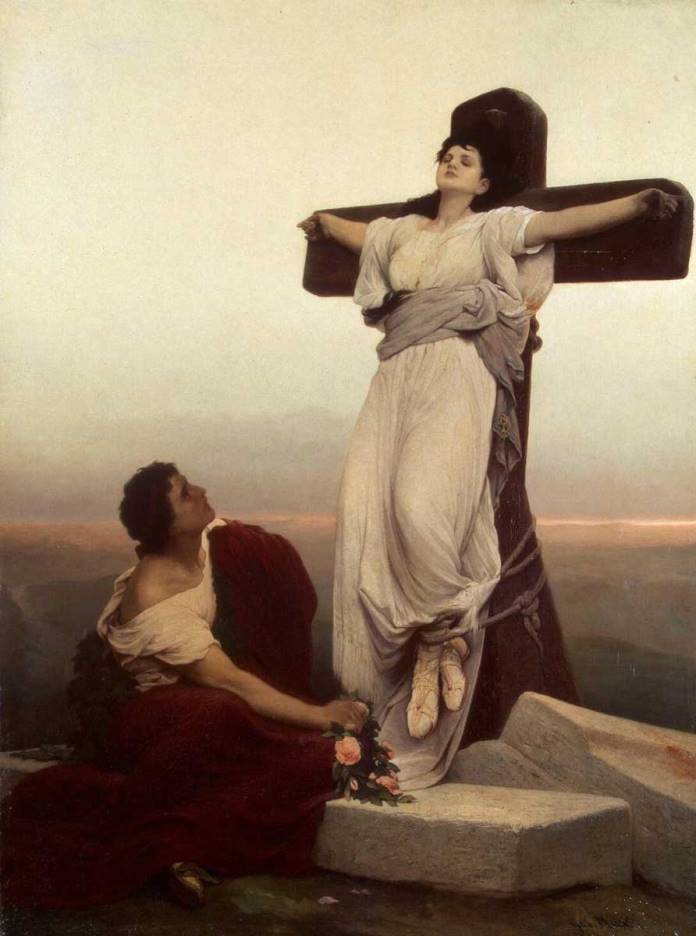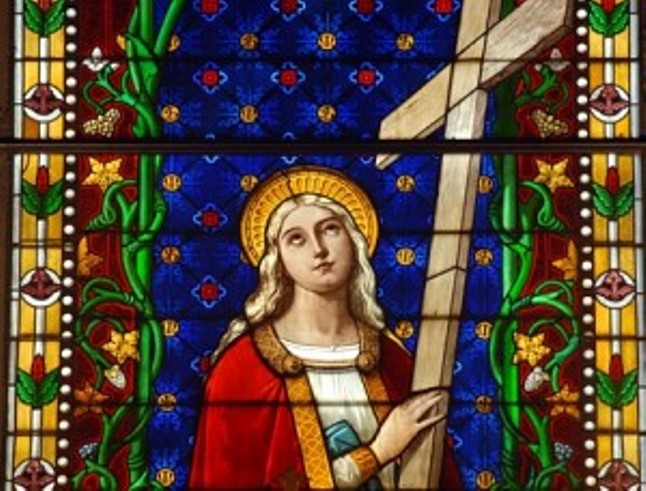Saints today – May 22 Santa Giulia, martyr in Corsica
There is scarce reliable historical information about Santa Giulia. What we know of her comes from a rather late Passio, probably dating back to the 7th century AD, in which her martyrdom is told and where the story is intertwined with edifying legends and pious traditions.

It is said that our Saint was a noble Carthaginian girl of the fifth century which, fallen into slavery, was bought by a merchant, a certain Eusebius, and taken to Syria. Eusebius, though pagan, held however in great consideration the human and spiritual qualities of Julia, being she a sweet slave, submissive and devoted, so as to take her with him on his travels.
In one of these, due to a shipwreck, our Saint arrived in Corsica. Here all the survivors, including Eusebius, sacrificed to the gods, to have escaped death. All, except of course Giulia, because she is Christian.
The governor of the place, Felice, a violent and cruel man, would like to buy the beautiful slave, but Eusebio refused the alluring proposal, taking much to the woman. One evening, then, Felice, taking advantage of the drunkenness of Eusebius, had himself brought before Giulia, offering her freedom if he had sacrificed to the gods. The Saint refused with a dry answer, since she was already free by serving Jesus Christ as she could never be by serving pagan idols.
Happy, indignant, he tried in various ways to make the young abjure from his faith. All his efforts, however, proved futile. For this reason, he did not hesitate to resort to violence, causing it to strike and scourge. Finally, he ordered that her hair be torn off and that, like the Master she was following, she would be crucified with two pieces of wood in the form of a cross, and thrown into the sea.
Mysteriously aware in a dream some monks from the nearby island of Gor-gona of what happened, they spotted off the cross with the body of the martyr still nailed hands and feet. Not only. Attached to the cross there was a scroll, written by angelic hands, with the name and history of martyrdom. Having recovered the body and transported it to their island, after having cleaned it up and anointed it with aromas, they placed it in a sepulcher.
So far the Passio.
Some scholars believe, however, that in truth, Giulia, of Carthaginian origin, had died a martyr in one of the persecutions under Decio (250 AD) or God-Cleziano (304 AD) and that, following the invasion of Africa from some of the Vandals of Genseric, of Aryan faith, some Christians fled, bringing with them the relics of the martyr, sheltering in Corsica. There the original Passio was enriched with certain details that made the story of the torture of the young to that of the Passion of the Lord more and more similar (hence the reference to the scourging, to the crucifixion, to the anointing of the body, etc.).

Although the martyr had died in Corsica and had then landed in other shores, she was not forgotten on the French island next to Italy, of which she is still patron.
In about 762 AD, Queen Ansa, wife of the Longobard king Desiderio, moved the relics of S. Giulia to Brescia, first landing near the ancient urban nucleus of today’s city of Livorno where, since the VIII – IX se- colo, the cult of martyr has spread to this part of Tuscany. In Bre- scia, probably in 763, Pope Paul I consecrated a church to her.
In the Palazzo dei Dogi in Venice there is a famous triptych, the martyrdom of Santa Giulia di Corsica, by Hieronymus Bosch. Devotion to the Holy, humble and industrious, faithful imitator of her Celestial Master even in the details of the torture, is linked to the sores that have distinguished her. For this reason, it is invoked in the pathologies of the hands and feet.





